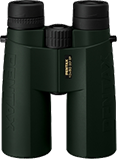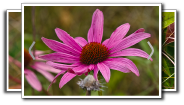stripe-legged robber fly
(Dioctria hyalipennis)
Conservation • Description • Habitat • Ecology • Distribution • Taxonomy
|
|
||||||||||||||
Description |
Stripe-legged robber fly, also called European longhorn robber, is an exotic, small to medium-sized, early season, robber fly. It is native to Europe and north Africa. The first sighting in North America was in the Boston area by Charles W. Johnson on June 28, 1916. It now occurs in the United States from Maine to Virginia, west to Minnesota and Illinois. It has also been recorded in Seattle, Washington and Denver, Colorado. It occurs in southern Canada from Nova Scotia to Ontario. Adults are active from May to July. They are found on large shrubs at the edges of fields and forests, and in meadows, woodlands, parks, and suburbs. They feed mostly on small bees and wasps, but also on small flies and pygmy grasshoppers. Adults are ⅜″ to 9⁄16″ (9 to 14 mm) in length. The body is slender and mostly black. There are two large compound eyes and three small simple eyes (ocelli). The compound eyes extend above the level of the top of the head (vertex), making the head appear hollowed out between the eyes when viewed from the front. The ocelli are arranged in a triangle on a prominent rounded projection (tubercle) in the middle of the head between the compound eyes. The antennae are long and black, and they are covered with short black hairs. They have three segments. The first two project forward and they are held close together, while the third is elongated and angled outward, forming a Y-shaped structure. The lower face is covered with long, silvery, erect hairs. There are just a few white, forward-directed bristles (a “beard”) on the lower part of the face. The tube-like mouthpart (proboscis) is short and black. The thorax is stout, humped, and black. It has three upper thoracic plates, from front to rear the pronotum, scutum, and scutellum. The pronotum is much reduced and not readily apparent. The scutum, the large middle plate, has two longitudinal grooves. It is moderately covered with short, light yellow hairs. The scutellum has a fringe of yellow hairs on the rear margin. On each side of the thorax, a conspicuous stripe of white hairs runs along the large lateral plate, the pleuron, to the base of the front legs. The balancing organs (halteres) are yellow. On the male, the abdomen is slender, shiny, and black, and there is a narrow orange band at the rear margin of each segment. On the female, the abdomen is thicker and shorter. It is flat above, rounded and orange below. The wings are clear and transparent. The veins are dark brown. The legs are much less hairy and spiny than those of other robber flies. The front and middle legs are mostly orange, with a black streak on the upperside of the third segment (femur) and fourth segment (tibia). This is the feature that gives this species its common name. The hind legs are mostly black. The last part of the foot (tarsus), corresponding to the leg, has five segments. The last segment has a pair of claws and 2 pads at the tip. |
Size |
Total length: ⅜″ to 9⁄16″ (9 to 14 mm) |
Similar Species |
Habitat |
Fields, forests, meadows, woodlands, parks, and suburbs |
Ecology |
Season |
May to July |
Behavior |
|
Life Cycle |
|
Larva Food |
|
Adult Food |
Mostly small bees and wasps, also small flies and pygmy grasshoppers |
Distribution |
||
|
Sources |
|
| 4/22/2025 | ||
Occurrence |
||
|
||
Taxonomy |
|
Order |
|
Suborder |
Brachycera |
Infraorder |
Orthorrhapha |
Superfamily |
Asiloidea |
Family |
|
Subfamily |
Dioctriinae |
Tribe |
Dioctriini |
Genus |
Dioctria |
Synonyms |
|
Subordinate Taxa |
|
|
|
Synonyms |
|
Asilus hyalipennis Dioctria anomala Dioctria baumhauer Dioctria flavipes Dioctria informis Dioctria strandi Dioctria varipes Sylvicola informis |
|
Common Names |
|
common hawkfly (Germany) European longhorn robber stripe-legged robber fly stripe-legged robberfly |
|
Glossary
Femur
On insects and arachnids, the third, largest, most robust segment of the leg, coming immediately before the tibia. On humans, the thigh bone.
Halteres
In flies: a pair of knob-like structures on the thorax representing hind wings that are used for balance.
Ocellus
Simple eye; an eye with a single lens. Plural: ocelli.
Proboscis
The tube-like protruding mouthpart(s) of a sucking insect.
Tarsus
On insects, the last two to five subdivisions of the leg, attached to the tibia; the foot. On spiders, the last segment of the leg. Plural: tarsi.
Tibia
The fourth segment of an insect leg, after the femur and before the tarsus (foot). The fifth segment of a spider leg or palp. Plural: tibiae.
Vertex
The upper surface of an insect’s head.
Visitor Photos |
||
Share your photo of this insect. |
||
This button not working for you? |
||
Alfredo Colon |
||
 |
 |
|
 |
 |
|
 |
 |
|
 |
 |
|
MinnesotaSeasons.com Photos |
||
|
||
|
||

Visitor Videos |
||
Share your video of this insect. |
||
This button not working for you? |
||
|
Other Videos |
||
Stripe-legged Robberfly, Dioctria hyalipennis, De Brand, NB, the Netherlands, 8 July 2023 (3/4) |
About
Jul 9, 2023 Dutch name: Gewone Bladjager. Here I merged videos of four different individuals from the same stretch of forest edge. |
Pędźka szklistoskrzydła - Dioctria hyalipennis cz2 |
About
Aug 23, 2020 Pędźka szklistoskrzydła - Dioctria hyalipennis. Gatunek owada z rodziny łowikowatych - Asilidae. Glasswinged fly - Dioctria hyalipennis. A species of insect from the family Asilidae. |

Visitor Sightings |
||
Report a sighting of this insect. |
||
This button not working for you? |
||
Alfredo Colon |
Location: Albany, NY |
 |
Alfredo Colon |
Location: Albany, NY |
 |
Alfredo Colon |
Location: Albany, NY |
 |
Alfredo Colon |
Location: Albany, NY |
 |
Alfredo Colon |
Location: Albany, NY |
 |
Alfredo Colon |
Location: Albany, NY |
 |
MinnesotaSeasons.com Sightings |
||
|

|
Created: 4/22/2025 Last Updated: © MinnesotaSeasons.com. All rights reserved. |


